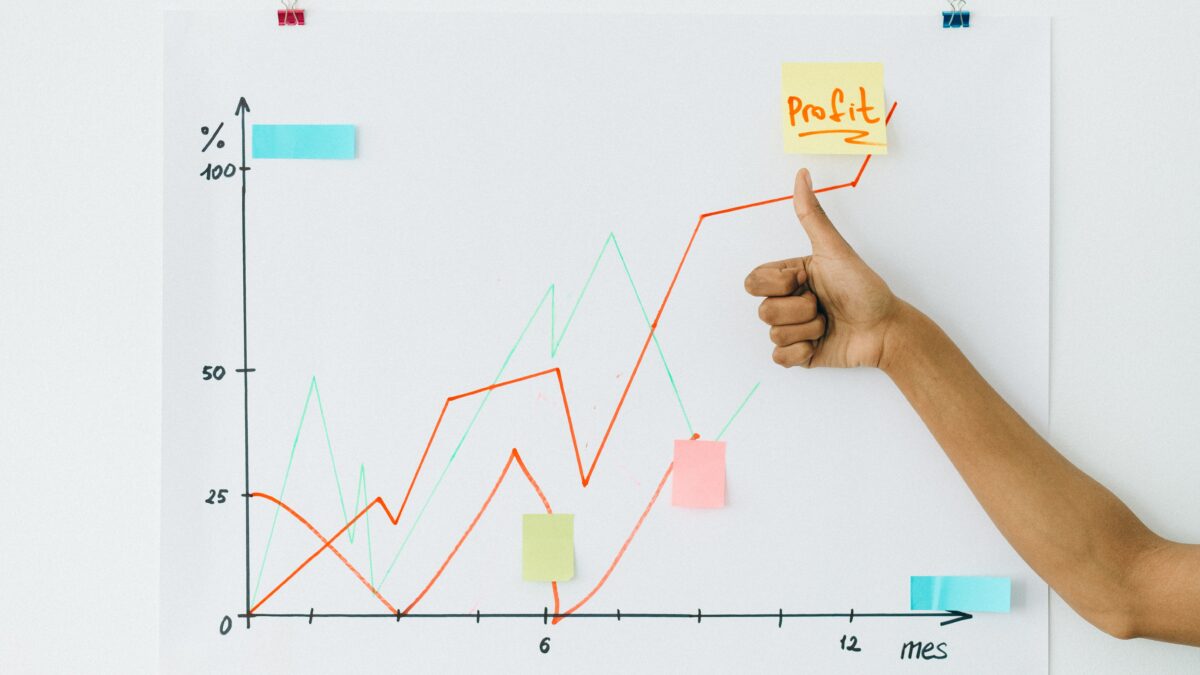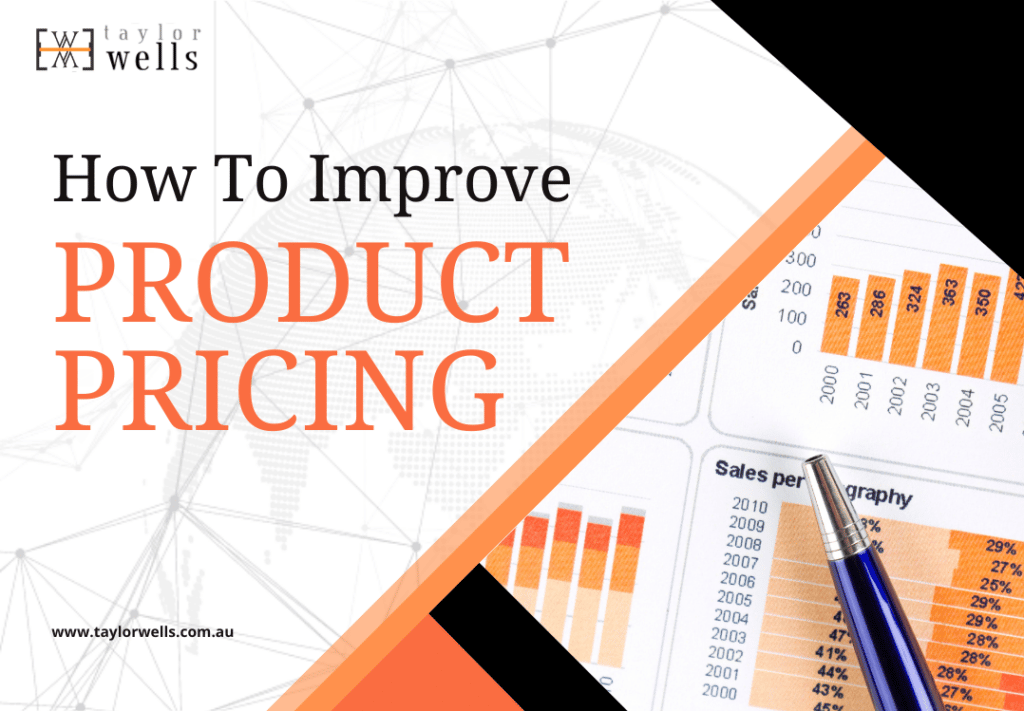
High Low Pricing Strategy: How It Can Increase Your Profits⭥
Utilising a high low pricing strategy is not simple and there are several points to consider. Do you have a deeply-rooted low-price position? Or are you only attempting to match your competitors? Does your company meet the conditions to be profitable despite low prices?
>Download Now: Free PDF How to Improve Product Pricing
Businesses frequently face challenges in driving store traffic and encouraging customers to purchase additional items when they’re in the store. One of the reasons for this is that customers nowadays may only visit shops solely to assess products and compare prices. It enables them to select and purchase from another online or in-person retailer that offers the best price.
This is where the high low pricing strategy comes in. High low pricing strategy is a widely known retail pricing scheme in which a product or a service is launched at a premium level and then slowly repriced and marked down over time. Employing this approach, the price of a product may fluctuate between high and low over a set timeframe.
In this article, we will provide you with the answers to all the above questions. First, we explain what it means to be in a low pricing position. We will also discuss the relationship between prices and profits. Then we enumerate the decisive factors that ensure profit generation despite low prices. Lastly, we examine Honda’s case and how they successfully shifted from a higher to a lower pricing position.
We argue that establishing a higher reference price and then repricing to lower rates can make your products and services attractive to consumers and give them a sense of urgency to purchase. We believe that with the right methods and pricing position, a high low pricing strategy can help you increase your sales and bring more profits to your business.
By the end, you will know if a high low pricing strategy is the best for you.
High and Low-cost Pricing Strategy: When It Works And When It Doesn’t
How can starting from high prices and then shifting to low prices bring more profits? Winning with low-cost pricing is more than just trying and staying one step ahead of the game. Kicking off with high prices, consumers may perceive that your products are of high quality. But being costly can also decrease demand. So before cutting off your prices, you must first assess if you are in the range of the right pricing position.
You need to be aware of two important things if you’re planning to apply a high low pricing strategy to your business: your pricing position and the link between prices and profits.
The Subtle Difference Between Genuine Low-Price Position and Price War Engagement
There is a distinction between an inherently low-price position and the intention to engage in a price war. A good low-price position is long-term, based on reliability and sustainability rather than instant gains.
To further explain, let us recall a famous price war in the United States aviation business. American, Delta, and United shifted their fare systems and cut prices monthly to compete with each other.
While another firm, Southwest, had always been in a feasible low-price position that others could not resemble, no matter how extreme their price reductions became. Southwest said that they would like to match their new fares but that would require them to raise their prices.
The charm of price reductions and price war seem so tempting, but they are founded by false beliefs that have little to do with a real low-price position.
One solution for this relates to culture. Many businesses fail to recognise that the key to winning a price war is not having to engage in one in the first place. Take note that it is possible to be competitive without participating in a price war.
If it is not necessary, begin no price wars. Don’t go up against them. Don’t participate in excessive markdowns. These only teach consumers in both B2C and B2B markets to purchase based solely on price.
High and Low Cost Pricing Strategy: The Link Between Low Prices and High Profits
Can you expect promising revenue growth if you set low prices?
Low prices and high profits seldom go hand in hand. It is only possible when a company has a strong, substantial, and long-term cost advantage over its rivals.
The price position influences the entire business framework, product quality, brand image, as well as how to drive innovation. Thus it governs which market sections the company will cater to and the modes by which it will do so.
7 Deciding Factors That Make Low Prices Generate High Profits
Thinking about how low prices can result in high profits? Read through the following causal factors to find out.
Administration and Production Factors
1. A Low-Price Position From The Beginning. Since day one, all successful low-price companies relied on low costs and high volumes.
Across many cases, they pioneered completely new and innovative business models. Although it is not completely impossible, it is pretty uncommon to successfully transition from a high-priced or mid-priced situation to a low-priced position.
2. High-Growth, High-Revenue Outlook. This sets up economies of scale, which they take advantage of to the maximum degree possible.
3. Noteworthy Efficiency. Some businesses function at a low cost and with high process efficiency, enabling them to profitably charge low prices while maintaining high margins and profits.
How do they do this? They specialised in acquisition — tough but fair to the terms and prices of their suppliers. Aldi, a German retail company, and IKEA, a Swedish retail chain, are experts in this field.
4. Adequate and Consistent Quality. Keep in mind that cheaper prices can never compensate for poor and flawed production, at least not over time. Appropriate resources are required for long-term success. Quality matters and it must be implemented with consistency.
Marketing and Service-Oriented Factors
1. Emphasis on Core Products. They don’t do anything that isn’t essential for the client, allowing them to save money without risking value creation.
2. Price-Centred Marketing. They are almost concerned primarily with price when they advertise. You can look into Aldi and its German rival Lidl, as well as the low-cost airline Ryanair and Southwest’s “Transfarency” campaign.
3. No Mixed Messages. Almost all of the profitable “low price, high profit” businesses adopt an EDLP, or “everyday low price” tactic rather than depending on regular momentary advertising.

How To Properly Execute A High and Low Cost Pricing Strategy?
Are you currently in a high-price position but convinced that lowering prices is the best course of action for your business? How are you going to do it?
With the right means and proper implementation, you can cut off your prices and still win the competition.
The late C. K. Prahalad described in his book The Fortune at the Bottom of the Pyramid the continuing development in China, India, and other growing economies implies that millions of consumers are gaining enough purchasing power each year to afford mass-produced goods, even at extremely low prices.
If a company or one of its product lines desires to pursue an ultra-low-price position, the very same seven components apply to a much greater extent. Let’s look at Honda as an example.
Low Pricing Strategy: Why Honda Switched To A Lower Pricing Position
Honda Dream, the group’s former best-selling model, cost around $2,100. They had a hand at over 90% of the Vietnamese motorcycle market during this time.
Unfortunately for them, Chinese competitors soon hit the market with bikes priced between $550 and $700. Chinese manufacturers quickly sold over a million motorcycles per year, while Honda’s volume dropped from around a million to just 170,000.
As an immediate remedy, Honda reduced the Dream’s price from $2,100 to $1,300, a figure they knew they couldn’t sustain profitably. This action is not meant to usher in a price war. Instead, it was the first step in a price position change for Honda.
Simultaneously, Honda was working on the Wave, a much simpler and much less pricey model. The new bike integrated reasonable performance with the least production costs possible.
Introducing Lower-Priced Product: The Wave
Big firms, like Honda, can go against ultra-low-cost suppliers in emerging economies, but not by lowering the prices of their existing models. A progressive readjustment and revamp, huge streamlining, local production, and immense cost awareness are needed to be successful.
The Dream’s days were numbered, but Honda’s were not. Honda introduced the Wave for $732, which was 65% cheaper than the Dream. Honda recaptured the Vietnamese motorcycle market, and most Chinese manufacturers decided to back away.
Are Low-Priced Products Difficult To Market?
Marketing is, undeniably, a huge challenge for companies with a low-price or ultra-low-price position.
Their efforts are distinct from the traditional advertising strategies of high-end luxury goods companies which integrate eye-catching style, excellent performance, and high quality with extravagant packaging and idealistic promotions.
Knowledge is the key to marketing for low-cost businesses. What a customer requires and desires, as to what level of quality — more importantly, what the customer can live without.
How Do You Profit From a High Low Pricing Strategy?
We mentioned that marketing will be a challenge when you decide to shift to a lower pricing position. But that doesn’t mean the end of your competitiveness and profitability. Even without high-end products, attracting customers is just within your reach.
As a matter of fact, ultra-low-cost products coming from developing markets have already begun to expand in high-income regions. This occurrence fosters profit generation for businesses.
Siemens, Philips, and General Electric have created remarkably simpler medical equipment aimed at Asian markets. They are now selling the same ultra-low-priced devices in the United States and Europe. Renault’s Dacia Logan, which was designed for Eastern European markets, is doing well in Western Europe.
Such tools do not compete with the much more expensive ones used in hospitals or other particular practices. Under certain circumstances, ultra-low-cost items have created entirely new market segments, such as medical practitioners, who perform a few basic, initial diagnostic tests on their own. Tuck’s VG Govindarajan refers to as “reverse innovation.”
Advantages and Disadvantages of a High to Low cost Pricing Strategy
A firm can increase sales and reach more price-sensitive customers by employing a high low price strategy. It also aids in gaining exposure and increasing sales of the company’s other products or services.
However, it demands major marketing efforts and advertising expenditures, which is challenging. Buyers may presume that goods are reduced in price because they are of poor quality. This belief may give the impression that the store’s products are of inferior quality to those of its competing firms.
〉〉〉 Get Your FREE Pricing Audit 〉〉〉
Bottomline
Companies can choose from a wide range of pricing options, ranging from highly luxurious to ultra-low. Whatever strategic price position a CEO nominates, he or she must still fulfil two critical duties: unifying each function of the organisation with that price position and then protecting it against risks from within and without the business.
That is the only way for a company to leverage the compelling relationship between price and profit and create long-term profits for shareholders.
You can benefit from setting a high low pricing strategy. The first step is to determine if you are in a suitable pricing position. If not, and you would like to shift from a higher to a lower pricing position, give it a lot of careful thought. You must have effective management to implement strategies that will ensure the success of your pricing innovations.
Our findings show that with the right set-up and pricing team in place, incremental earnings gains can begin to occur in less than 12 weeks. After 6 months, the team can capture at least 1.0-2.25% more margin using better price management processes. After 9-12 months, businesses are very often generating between 3-7% additional margin each year as they identify more complex and previously unrealised opportunities, efficiencies, and risks.
For a comprehensive view on maximising growth in your company,
Download a complimentary whitepaper on How To Drive Pricing Strategy To Maximise EBIT Growth.
Are you a business in need of help to align your pricing strategy, people and operations to deliver an immediate impact on profit?
If so, please call (+61) 2 9000 1115.
You can also email us at team@taylorwells.com.au if you have any further questions.
Make your pricing world-class!
Related Posts
Leave a Reply Cancel reply
Categories
- marketing strategy (26)
- Organisational Design (14)
- Podcast (114)
- Pricing Capability (87)
- Pricing Career Advice (10)
- Pricing Recruitment (19)
- Pricing Strategy (289)
- Pricing Team Skills (13)
- Pricing Teams & Culture (24)
- Pricing Transformation (47)
- Revenue Model (25)
- Sales Effectiveness (27)
- Talent Management (7)
- Technical Pricing Skills (35)






